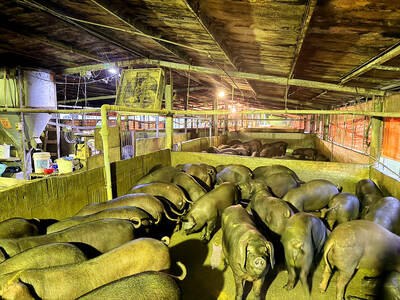The publishers of Taiwan Architect Magazine, the Taiwan Architects Association, announced on Nov. 10 that the improvement work on Terminal One of Taoyuan International Airport, completed in June 2013, has been awarded the first prize in the Oscars of the Taiwan architecture world, the 2014 Taiwan Architecture Award.
Members of the evaluation committee noted the way in which the Terminal One improvement project utilized a third floor outside terrace, the design concept being the wings of a giant bird in flight, incorporating the idea of the traditional Eastern curved roof, with the arrangement of the steel struts making the architectural structure more stable. The design also covered the large area of the original platform, so that there was no need to increase the flooring on any floor, and this created imposing new areas such as the third floor arrivals and immigration hall. The cost of this improvement project was only 1/20, and it created only 1/10 of the carbon emissions and produced only 1/30 of the waste soil, compared to pulling down the old terminal and constructing a new one.
(Liberty Times, translated by Paul Cooper)
中華民國全國建築師公會雜誌社十一月十日公布,於二0一三年六月完工的桃園國際機場第一航廈改善工程,榮獲台灣建築界奧斯卡獎─二0一四「台灣建築獎」的唯一首獎。

Photo: Yao Chieh-hsiu, Liberty Times
照片:自由時報記者姚介修
評審委員認為,第一航廈改善工程在建築設計上利用了三樓室外平台,以飛行中的巨大鳥翼為設計概念,融入東方傳統的大屋頂意象,鋼構骨架排列法也使得建築結構更為穩固,覆蓋原有的平台加大面積,因此無須增加任何樓地板,也營造出氣勢宏偉的三樓入境證照查驗大廳等新擴區。改善工程與拆除舊航廈重建相比,費用僅約二十分之一、碳排放僅十分之一,廢土量更降低至三十分之一。
(自由時報記者姚介修)

For many people in Taiwan, childhood memories of rural life include pig pens standing beside family homes. Leftover rice, vegetable scraps and soup from daily meals were poured into buckets and fed to pigs. This practice of feeding pigs with household food waste was once a common way of life, both an economic choice and an expression of agricultural society’s deep respect for conserving resources. From a practical standpoint, pigs are omnivorous animals capable of efficiently digesting food scraps that humans can no longer eat. For rural households, food waste cost almost nothing, yet it could be converted into pork, a

Sea star wasting disease (SSWD) is a strange and serious illness affecting sea stars, or starfish. This disease causes sea stars to develop painful lesions, lose their arms, and eventually turn into a gooey, melted mess. Since it was first observed in 2013, millions of sea stars along the Pacific coast of North America have died from this __1__. Although viruses were once considered a possible cause, researchers now believe that environmental stressors and microorganisms are primarily __2__ for sea star wasting disease. One of the main environmental triggers appears to be warmer ocean water. When the water heats

Tango unfolds in a dimly lit room, where a haunting melody ushers two dancers into a close embrace. Here, music and movement merge into a silent yet passionate conversation, expressing longing, memory and shared purpose. What makes tango truly magical is the deep interaction and spontaneous improvisation between partners. Tango began in the late 19th century in Buenos Aires, Argentina’s bustling capital. Born in the poor working-class neighborhoods and busy port areas, this dance emerged from a melting pot of cultures. European immigrants, African slaves and local residents all contributed to its unique character. From these rich influences, tango

Continued from yesterday(延續自昨日) https://www.taipeitimes.com/News/lang The loss of sea stars significantly impacts the ocean ecosystem. Sea stars are important __6__ that help control populations of mussels and sea urchins. Among them, the sunflower star is one of the largest and fastest sea stars and is adept at preying on sea urchins. Without sea stars, sea urchins can __7__ in numbers and devastate kelp forests. These forests are essential __8__ for many marine animals and also help capture carbon from the atmosphere, which is vital in the fight against climate change. The mystery behind SSWD is still __9__, but it is clear that